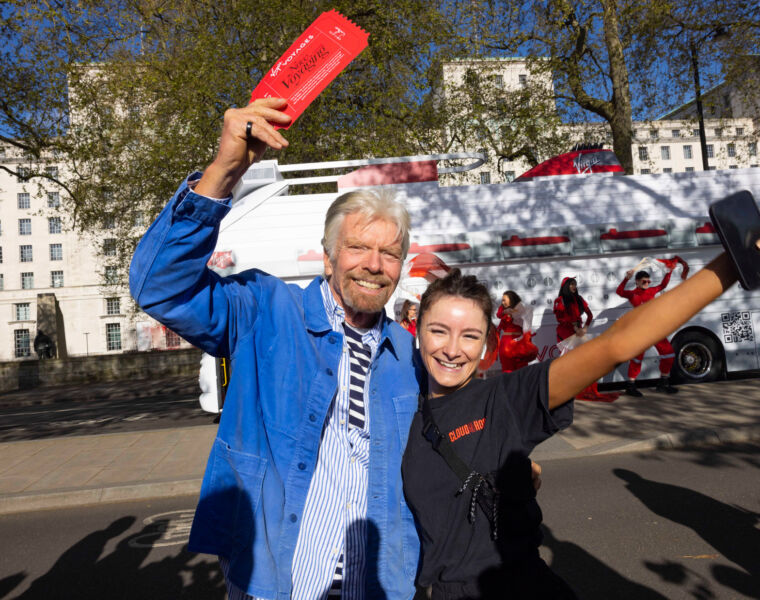
When most of us think of funerals, we imagine loved ones gathering at a church dressed in black in a ceremony where prayers are said, tears are shed, and memories are shared. But this isn’t the same in other places around the world.
If we look at a traditional British funeral, people who’ve come to pay their respects get into cars to form a single file line following the hearse. Once they arrive at the graveyard, they place flowers on the casket and share more stories before lowering it into the ground.
They then proceed to the immediate family’s home, where loved ones arrive with casseroles in tow. For many of us in Britain, this is what we envision as a ‘traditional’ funeral.
Online will-writing and estate-planning service, Farewill, celebrates Britain’s diversity, and that there are many ways to commemorate the life of a loved one. CEO and founder of Farewill, Dan Garrett, describes a few fascinating funeral traditions from around the globe:
Mongolia and Tibet
Vajrayana Buddhists in Mongolia and Tibet believe that our spirits are still mobile after death— and that the body must be returned to the earth when our spirits leave. They hold a ceremony after a loved one’s death meant to reconnect the body back to the earth, where it is placed atop a mountain, open and exposed to the elements – including vultures.
This process has been carried out in this way for thousands of years, and according to a recent report, a vast majority of Tibetans still choose to celebrate end-of-life this way.
New Orleans
Jazz music, creole food and parties go hand in hand with the stereotypical image that many of us have of New Orleans, Louisiana. The lively traditions that make New Orleans such a vibrant cross-section of West African, French and African-American cultures extend to all corners of life, including funeral processions.
Funeral processions in New Orleans offer a unique balance between grief and celebration and are led by a brass marching band. At the beginning of the funeral, the band plays slow, sad songs, but when the body is buried, the tone shifts to happier tunes as a way to commemorate the life of the deceased.
South Korea
As a small, densely populated country, South Korea is actually running out of room to bury its dead. A law passed in 2000 requires anyone burying a loved one to remove the grave 60 years after their burial.
As a result of this law, many South Koreans have opted instead for cremation over the past 20 years. While many hold the ashes of loved ones in ceremonial urns, another popular option is to compress the ashes into gem-like beads that are then displayed in the home.
Aboriginal Australia
In Australia’s Northern Territory Aboriginal society, funerals are accompanied by extremely complex rituals. First, loved ones gather in the deceased person’s living area in a smoking ceremony meant to encourage the spirit to leave their body.
Following this, mourners cover themselves in ochre paint and participate in a feast, where food and dance are enjoyed in abundance. The body is then traditionally placed atop a platform and covered in leaves as it is left to decay.
Ghana
In Ghana, a growing trend is to bury someone in a coffin that visually symbolises the deceased person’s profession or passions in life. These ‘fantasy coffins’ are for families that believe that life transcends death and the deceased will continue pursuing his or her profession in an afterlife to help the deceased ‘remember’ where they came from.
For example, CNN reported in 2018 that a small group of craftsmen in Ghana created coffins that ranged from the shape of an aeroplane for a former pilot to an oversized fish for a fisherman to a gigantic bible for someone who loved going to church.
Madagascar
The Malagasy people of Madagascar have a famous ceremony called ‘famadihana,’ or ‘the turning of the bones,’ that happens about once every five years; a family has a celebration at its ancestral crypt where they have buried the bodies of loved ones who have passed.
During the ceremony, the cloth-wrapped bodies are sprayed with wine or perfume. Live bands entertain the mourners, and family members dance with the bodies of the deceased.
This celebration acts as a chance to pass family news to the deceased and ask for their blessings, as well as time to remember and tell stories of their loved ones.
Read more lifestyle articles in our dedicated section here.
![]()




You must be logged in to post a comment.